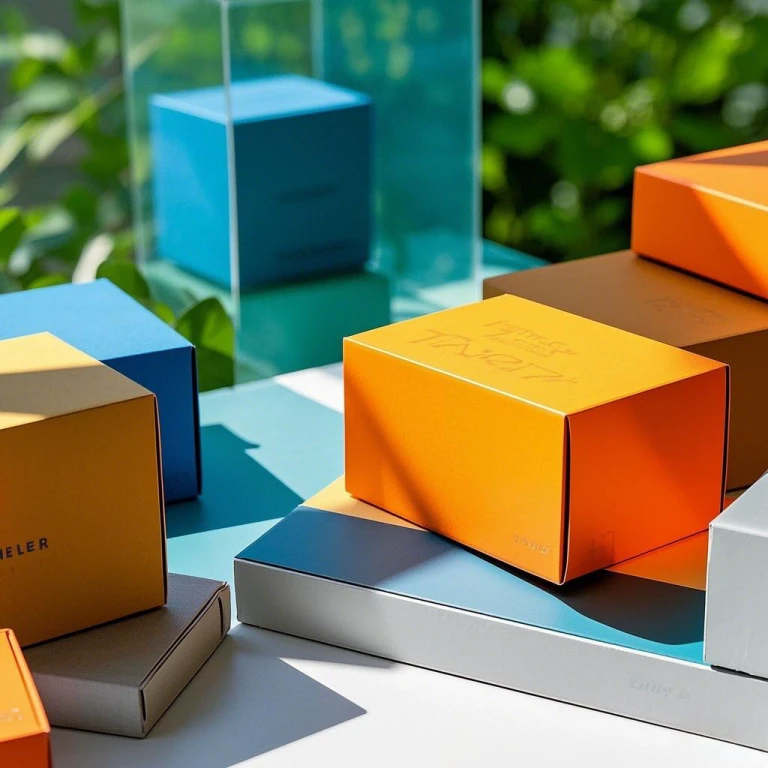What Are The Differences Between Sustainable & Eco-Friendly Packaging?
What Are The Differences Between Sustainable & Eco-Friendly Packaging?
As more people become eco-conscious, terms like “sustainable packaging” and “eco-friendly packaging” are popping up everywhere. But understanding their differences is key to making better choices for the planet. Let’s explore what sets them apart—and how both can help reduce environmental impact.
1. Core Definitions: LongTermvs. Immediate Action
Sustainable Packaging
This approach looks at the entire lifecycle of packaging. It focuses on:
- Using renewable resources (like bamboo, sugarcane, or recycled paper).
- Harm materials can be reused, recycled, or safely returned to nature.
- Minimizing energy use and greenhouse gas emissions across the supply chain.
An endlessly recyclable glass jar is eco-friendly – it cuts waste and lowers demand for new materials.
Eco-friendly Packaging
This term focuses on immediately reducing harm to the environment. It often includes:
- Biodegradable materials (e.g., packaging made from cornstarch or seaweed).
- Recyclable materials (like paper or cardboard).
- Designs that use fewer chemicals or less energy to produce.
A compostable coffee cup is eco-friendly because it breaks down quickly, but its production might still use resources like water or energy.
2. Materials: What Makes Them Different?
Sustainable Packaging Materials
These are chosen for their long-term benefits:
- Recycled steel or aluminum: Can be reused infinitely without losing quality.
- Plant-based plastics: Made from renewable resources like corn or algae.
- FSC-certified paper: Comes from responsibly managed forests.
The goal is to create a closed-loop system where materials stay in use for years.
Eco-friendly Packaging Materials
These prioritize quick environmental benefits:
- Biodegradable packaging: Mushroom-based foam or seaweed films that decompose in months.
- Recycled cardboard: Saves trees and energy compared to new paper.
- Water-based inks: Non-toxic and easier to recycle.
While eco-friendly materials help today, some (like certain bioplastics) might still require industrial composting facilities to break down.
3. How They Affect the Supply Chain
Sustainable Packaging’s Big-Picture View
Looks at every step, from production to disposal:
- Local sourcing: Reduces transportation and lowers the carbon footprint.
- Energy-efficient manufacturing: Uses solar power or waste heat to cut greenhouse gas emissions.
- Ethical labor practices: Ensures fair wages and safe working conditions.
A company using recycled plastic from local waste centers is practicing keeping materials local and reducing transport pollution.
Eco-friendly Packaging’s Narrower Focus
Eco-friendly solutions often target specific issues:
- A mailer made from materials avoids plastic pollution.
- Lightweight packaging reduces fuel use during shipping.
However, shipping that mailer overseas using fossil fuels could still result in a high environmental impact.
4. Carbon Footprint: LongTerm vs. Short-Term Wins
Sustainable Packaging = Long-Term Goals
- Reusable systems: Glass milk bottles returned, cleaned, and reused for decades.
- Renewable energy: Factories powered by wind or solar energy.
- Durability: Packaging designed to last (e.g., metal tins for snacks).
These practices significantly reduce waste and emissions over time.
Eco-friendly Packaging = Quick Fixes
- Compostable utensils: Break down in 3–6 months instead of 500 years.
- Recycled paper wraps: Save water and energy compared to virgin paper.
These options are better than traditional plastics but may not solve bigger issues like factory pollution.
5. Which Should You Choose?
The best choice depends on your priorities:
- Choose sustainable packaging if you want to:
- Invest in long-term reducing environmental harm.
- Support renewable resources and ethical supply chains.
- Choose environmentally friendly packaging if you want to:
- Avoid plastic waste immediately.
- Use materials that decompose naturally.
Pro Tip: Combine both! For example:
- An eco-friendly shampoo bar, packaged in recyclable paper and shipped in sustainable bamboo pulp boxes.
6. Real-World Examples
- Sustainable: IKEA uses mushroom-based packaging for furniture—a sustainable alternative that grows in days and decomposes in weeks.
- Eco-friendly: Amazon’s “Frustration-Free” packaging uses 100% recyclable materials and avoids plastic clamshells.
Final Thoughts
Both sustainable and eco-friendly packaging matter, but they work differently. Sustainable practices build a healthier planet for future generations, while eco-friendly options tackle today’s problems.
To make a real difference:
- Look for certifications (e.g., FSC, compostable labels).
- Support brands that openly share their supply chain practices.
- Reuse or recycle packaging whenever possible.
Knowing these differences helps you pick eco-friendly packaging that matches your values and protects the planet


